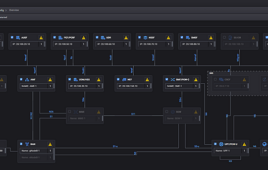Players in the connected car space have long known that data from vehicles is a valuable commodity – not only for consumers, but also to help the carmakers themselves improve vehicle performance. But most solutions in the space have traditionally relied on hardware as the workhorse, a model that required time-consuming and costly installations. Now, the executive behind Verizon’s hum is looking to software to deliver enhanced situational awareness in real-time on the road.
His time as Group President of Verizon Telematics aside, Erik Goldman is no stranger to the connected car space. Back in the 1990s, Goldman served as Vice President of Leo One Worldwide working on a project to launch 48 low-Earth orbiting satellites to connect high-value assets like vehicle fleets. He was also co-founder and president of Hughes Telematics, which was acquired by Verizon in 2012. After overseeing the transition to the carrier, Goldman retired in 2015 – only to return to the industry in 2016 as CEO of connected car upstart sfara.
Rather than relying on the specialized in-car hardware approach of old, Goldman said sfara is taking advantage of smartphone sensors to deliver real-time sensory awareness. According to Goldman, sfara’s solution uses artificial intelligence to analyze data collected from a user’s device – via the gyroscope, accelerometer, magnetometer, etc. – to calculate conditions and generate feedback for drivers using the app.
For instance, Goldman said the software can tell when a driver is navigating too aggressively and tell them to slow up immediately rather than just generating a poor performance report at the end of the day or week. The app can also hone in on distracted driving, with the ability to determine the difference between a passenger safely tapping away and a driver who should put the phone down. Goldman noted sfara’s software can also detect when a crash has occurred at speeds as low as 20 MPH, which he said makes it more accurate than airbag deployment-based monitors. And with its real-time capabilities, Goldman pointed out the app will be able to notify authorities immediately.
All of these things carry benefits across markets like consumer, insurance, and enterprise and fleet management, he indicated. But Goldman said it’s the software-based nature of the solution that really makes it a game changer.
“If I can (provide vehicle data) without having to have a device installed in the vehicle, that means several things. It means no longer managing all the hardware (installation) I just described. It doesn’t have to be absorbed into the business case – the cost of it – because there is no cost because the device is already owned by the individual or business, it’s just a software download. That pretty dramatically changes the equation for operating in these various business segments.”
Sfara’s solution has already attracted interest from the industry, drawing investors like Verizon to the table. So far, Verizon has been more of a “strategic, somewhat passive investor,” but Goldman said there are “certainly possibilities beyond that.” Goldman’s company is also in talks with other wireless carriers, as well as a wide range of other companies pursuing connected vehicle solutions for a variety of reasons – whether from the consumer, fleet, insurance, or other angles.
While sfara’s solution is already deployed in 17 countries, Goldman said the company is looking to expand its reach even further next year by developing technology that will allow the solution to be deployed in different forms. These, he said, will include an SDK that can be integrated into an enterprise’s existing app or solution, and a standalone option where sfara provides the entire experience.
Goldman said he sees sfara’s work as one stepping stone in the path to fully autonomous cars.
“As we expand the adoption of our more fundamental solution, which is more focused on safety of employees, individuals in vehicles or out of vehicles, we’ll be establishing that broad footprint that allows us to support the autonomous industry with the technology that we’ve developed for communicating directly to a vehicle the location of those people who are not in the vehicle,” Goldman said. “I can’t tell you when the automobile manufacturers will be ready for that, but we’ll be ready before they are.”




